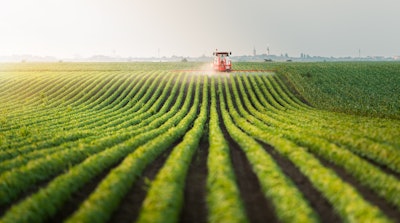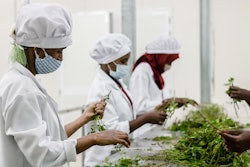
The massive disruption of agricultural supply chains brought on by the pandemic led to valuable lessons. By looking at the disruptions as learning opportunities, the agricultural industry can make significant improvements to its resiliency in the face of future events.
Large supply chains in any industry can be quite complex, but the perishable nature of agricultural products makes managing logistics an even more daunting undertaking. The American Farm Bureau Federation estimates that just 8% of U.S. farms supply food locally, which means the rest are part of a large and interconnected network designed to maximize efficiency and get products to their destinations at just the right time. During the pandemic, food production remained steady, but labor disruptions in the harvesting, processing, and transportation sectors demonstrated how fragile hyper-efficient supply chains can be.
The link between efficiency and fragility
When the major players in a supply chain rely on just-in-time (JIT) inventory management, even small disruptions can create a ripple effect both up and down the chain. This played out when meat processing plants shut down and farmers were forced to euthanize animals. Because livestock were no longer around to consume the feed, farmers producing grain for that purpose ended up with excess inventory and no one to sell to. With less capital to invest in supplies and equipment to fuel the next growing season, it became obvious that a few major plants shutting down can reverberate throughout an entire continent.
The difference between supply chains sending food directly to consumers and those designed for delivery to food service industries posed additional problems when restaurants closed around the world. A facility packaging 50-pound bags of flour for commercial customers, for example, has a hard time switching to equipment that produces 5-pound bags, meaning a surplus in one area doesn’t alleviate a shortage in another.
As vaccination rollouts accelerate around the country, we’re all hoping life goes back to normal, but that doesn’t mean agricultural supply chains should as well. With the pandemic entering the rear-view mirror, supply chain executives can adjust and improve their operations to be more resilient when the next disruption or disaster strikes.
Improving agricultural resiliency
A few things can be prioritized in order to make agricultural operations more resilient. Here are three of the best:
1. Improve decontamination efforts to reduce food and feed waste. An astounding 1.3 billion tons of food goes to waste after harvest worldwide, representing almost one-third of global agricultural output. Much of this waste is due to the growth of microbes and pathogens while food is in storage or transit.
2. Use data to extend shelf life. Technology can help extend the shelf life of food, but it’s far from the only solution. Many startups are attempting to improve the agricultural supply chain process. Increased data and smart technology can help extend the shelf life of food and feed products. With a more accurate picture of a food’s shelf life, packaging plants and distributors can ensure the product reaches its destination before it’s likely to spoil.
3. Use innovative tracing practices to isolate and treat spoilage. Despite the significant strides in the health and safety of agricultural supply chains, contamination will always be a concern. For this reason, it’s important to trace food and monitor it as it moves from a raw material to a finished good that customers buy off the shelves. Blockchain technology can facilitate that process, ensuring that contaminated or unsafe food can be traced back to a specific manufacturer and batch of product. This capability allows manufacturers to issue accurate recalls that limit unnecessary waste while ensuring buyers have transparency into the origins of unsafe food.
Supply chains in the agricultural industry are incredibly sophisticated, but they’ve been designed overwhelmingly around efficiency instead of resilience. The three practices above can offer major advantages during normal operations while also increasing durability up and down the supply chain in times of crisis.






![Adobe Stock 280800711 [converted]](https://img.foodlogistics.com/files/base/acbm/fl/image/2021/08/AdobeStock_280800711__Converted_.611e898daa123.png?auto=format%2Ccompress&fit=crop&h=167&q=70&rect=0%2C53%2C900%2C507&w=250)











